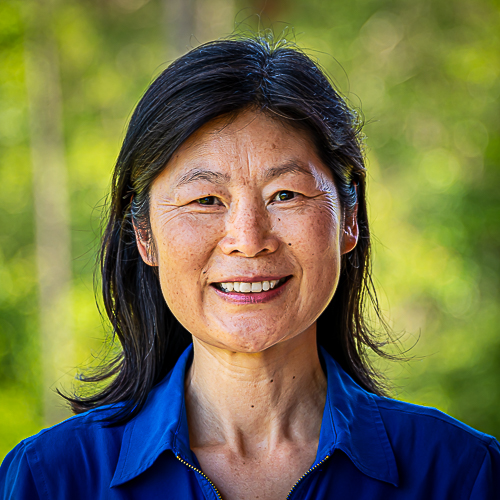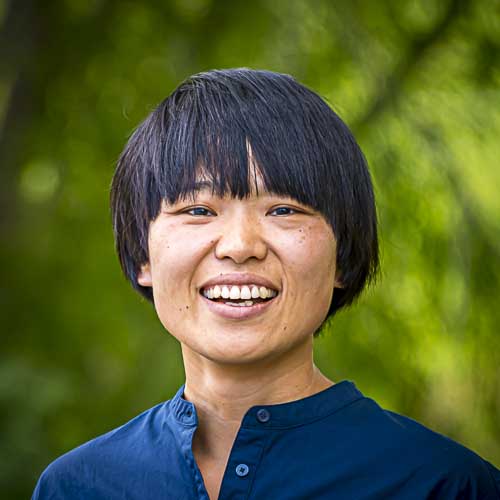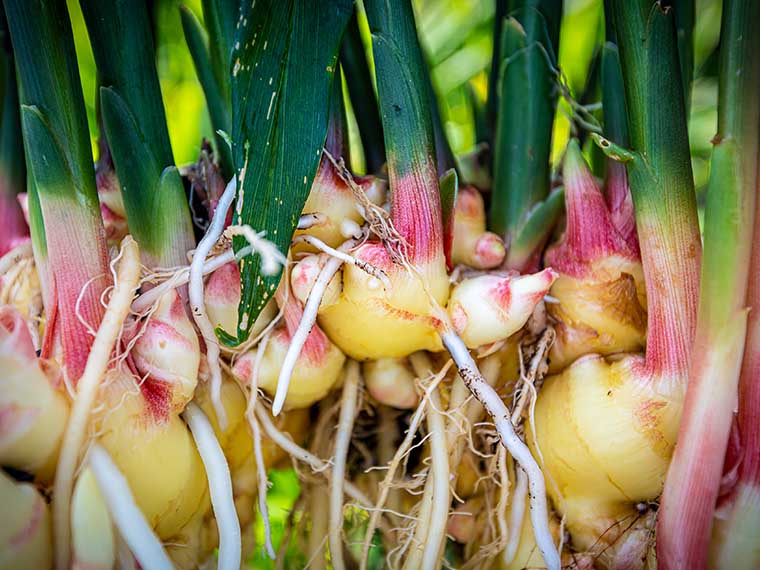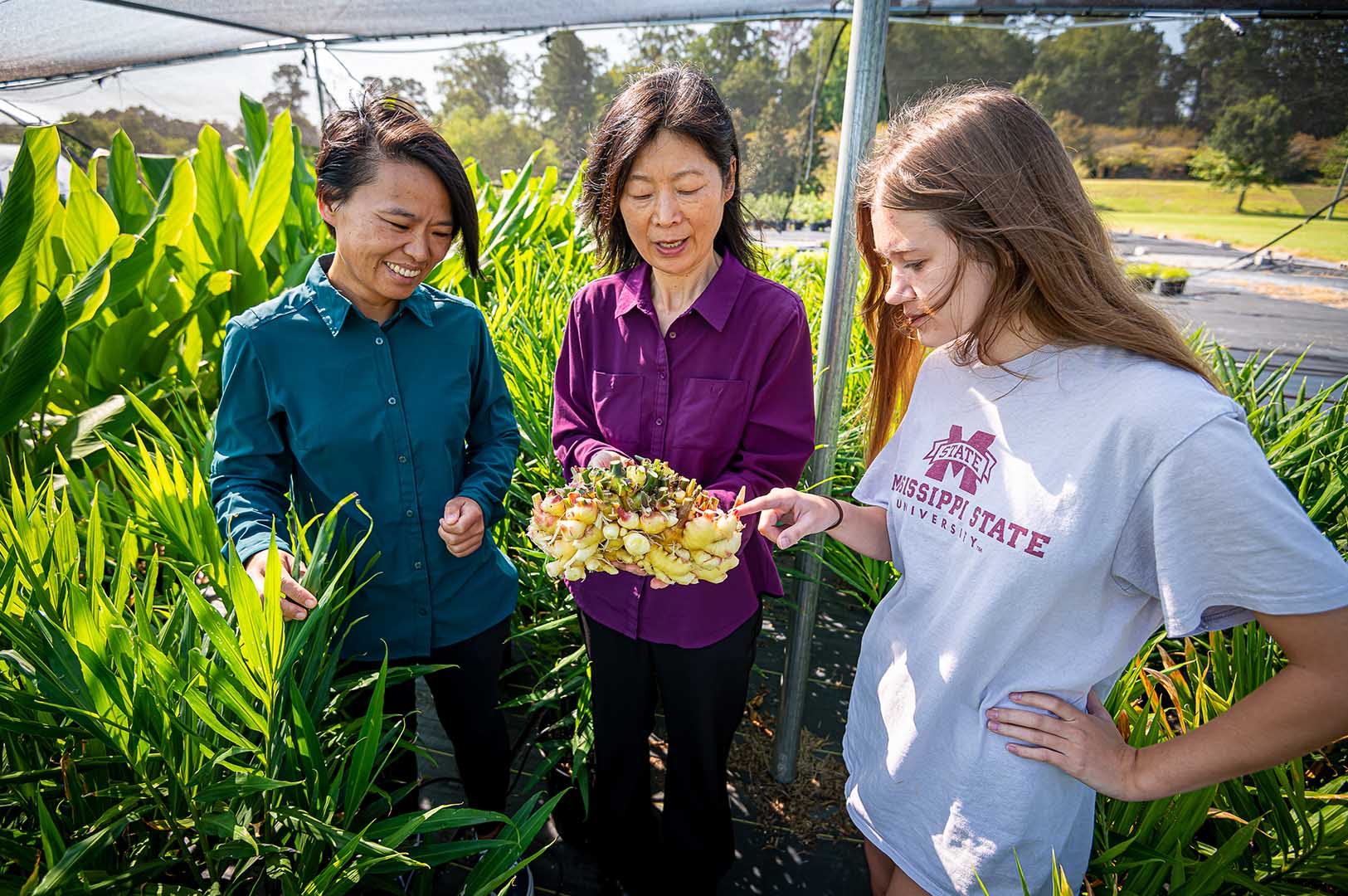The information presented on this page may be dated. It may refer to situations which have changed or people who are no longer affiliated with the university. It is archived as part of Mississippi State University's history.
America's taste for fresh flavor in the form of culinary herbs and spices has grown considerably over the past several years. That taste only promises to continue with the herb market projected to grow upwards of 4 percent per year between now and 2030, eventually becoming a $1.6 billion industry, according to a recent report from Market Research Future. When it comes to spices, the U.S. is the world's largest importer and consumer of spices in both volume and value, according to the USDA. MAFES researchers are trying to help Mississippi's produce farmers diversify and improve their crops while increasing availability of fresh herbs and spices grown locally.
Dr. Guihong Bi, research professor in the Department of Plant and Soil Sciences and MAFES scientist, is researching ways to better help growers select cultivars of herbs and spices while improving sustainable practices.
She and Dr. Tongyin Li, associate professor in plant and soil sciences, are growing basil, parsley, garlic, turmeric, and ginger.
"We hope to help growers diversify their crop profile and improve their farm income. I think this research will also increase the availability of locally-grown produce in the market. Consumer demand for locally-grown culinary herbs and spices continues to grow rapidly, creating a niche market and opportunities for local growers," Bi said.
The team studied 12 basil, eight parsley, nine garlic, one ginger, and three turmeric varieties in containers and raised beds, evaluating growth habits, vigor, leaf color, size, and biomass.
The parsley, a biennial, and the basil, an annual, are planted early in the spring and harvested throughout the spring, summer, and fall. The basil performed well in containers with the cultivar "Italian Large Leaf" producing the largest plant size and highest fresh and dried biomass. All parsley produced similar fresh and dry biomass.
"For the basil and parsley, we start the seedlings in the greenhouse and transplant into containers outside after the last spring frost. We're able to harvest all summer long into the fall," Bi said.
Among the nine garlic cultivars evaluated, "Silver Rose" performed the best with the biggest bulbs and highest fresh and dry biomass while "Early Italian" had the smallest bulb and lowest fresh and dry weights.
"We plant garlic in October and November and harvest the following year in early summer. It is a cool season crop that stays outside in containers and raised beds," Bi said
Even though garlic can tolerate mild cold, it's still susceptible to cold damage if temperatures get too low. Because of that, the garlic in raised beds performed better than garlic in containers.
"Raised beds have greater volume of media compared to a container with less volume and more surface, so the containers warm up and cool down faster," Bi explained.
Ginger and turmeric are root vegetables like garlic. Their rhizomes, or underground stems, are harvested like garlic bulbs. The "Red Hawaiian" turmeric variety performed best.
The ginger and turmeric are planted after the last frost in the spring, grow all summer, sprouting around May and June, respectively. The crops flourish throughout the summer and into the fall before being harvested in late fall or brought into greenhouses to protect the plants from frost over the winter. After that, plants are harvested the following spring.
"One thing that excites me most is that ginger and turmeric grow so well here. They are tropical and love warm, humid conditions," Bi said.
Bi seeks to learn more about sustainable practices for vegetable growers including container production and best practices.
"Containers provide flexibility of utilizing soilless substrates, adjusting planting density, and moving containers around. The use of growing media instead of soil in the ground makes managing pH and nutrients easier. Producers can also adjust production scale, so the space is easier to manage. Also, containers can be moved into protected areas to prevent cold damage," Bi explained.
Li said developing alternative crops and more sustainable production practices give local produce farmers options.
"We're interested in learning about vegetable crops that aren't widely grown in our area to figure out if and how we can grow new offerings here. Besides trying to find alternative crops, we also want to explore alternative production practices to give growers options, especially when they may have limited growing space," Li said.
The research, funded by the Mississippi Department of Agriculture and Commerce, began in 2020 and has been extended through 2023. Noel Ebbert and Sage Smith, undergraduate researchers in the CALS Undergraduate Research Scholars program funded by the Mississippi Agricultural and Forestry Experiment Station, participated in the work.
We hope to help growers diversify their crop profile and improve their farm income. I think this research will also increase the availability of locally grown produce in the market.
Dr. Guihong Bi
Behind the Science

Guihong Bi
Research Professor
Education: B.S., Horticulture; M.S., Biology, Shandong Agricultural University, China; Ph.D., Horticulture, Oregon State University
Years At MSU: 6
Focus: Sustainable production of edible horticultural crops
Passion At Work: I love the idea that my applied research will help improve competitiveness and sustainability in

Tongyin Li
Associate Professor
Education: B.S., Horticulture, Tianjin Agricultural University, China; M.S., Horticulture, China Agricultural University; Ph.D., Horticulture, Mississippi State University
Years At MSU: 6
Focus: Sustainable production of edible horticultural crops
Passion At Work: I love the idea that my applied research will help improve competitiveness and sustainability.


